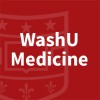
The Use of Post-operative NPWT Dressing in the Prevention of Infectious Complications After Ostomy...
Stoma IleostomySurgical Wound2 moreIntroduction: Although negative-pressure wound therapy (NPWT) is likely advantageous for wound healing, the efficacy and safety of its prophylactic use remain unclear. We performed a Randomized Control Trial to assess the usefulness of postoperative NPWT in reduction of postoperative wound healing complications and surgical site infections after diverting ileostomy closure, in the group of patients previously operated for colorectal resection due to cancer. Materials & Methods: Prospective, randomized study will be conducted. Patients with past history of colorectal cancer laparoscopic surgery with protective loop ileostomy scheduled to undergo ileostomy closure with primary wound closure will be randomly divided into groups with or without NPWT. The primary endpoint are incidence of wound related complications (WRC) (wound healing complications witch required surgical intervention other than suture removal or dressing changing). The secondary endpoints are incidences of Surgical Site Infection (SSI) and length of postoperative hospital stay (LOS) and length of complete wound healing (CWH). Cost analysis will also be performed. In first step of this study between January 2016 and December 2018 we will asses the usefulness of one of the NPWT devices (NANOVA KCI) in prevention of WHC in established group. The second part of the study will be performed in 2 centers between January 2019 and December 2021. In this step we want to compere other NPWT devices in the same application and to confirm single center outcomes .

Reduction of Surgical Site Infections in Elective Colorectal Surgery After the Implementation of...
Colorectal NeoplasmsSurgical Wound InfectionBackground. The Nosocomial Infection Surveillance Program in Catalonia (VINCat) monitors SSI in elective colorectal surgery since 2007 in 56 hospitals (7.5 million population). These hospitals perform active and prospective standardized surveillance of elective colorectal resections. Post-discharge surveillance is mandatory up to 30 days after surgery. Between 2007 and 2015, the SSI rate did not change significantly, with a cumulated incidence of 5,491 SSI in a total of 29,006 interventions (19%). In 2015, a working group of VINCat specialists and surgeons from the Catalan Society of Surgery was set up to formulate a specific bundle of SSI preventative measures for colorectal surgery. Aim. To analyse the effect of a specific bundle for SSI prevention in elective colorectal surgery. Methods. In 2016, a bundle of six preventative measures was recommended to the VINCat hospitals. Bundle measures were: systemic and oral antibiotic prophylaxis, mechanical bowel preparation (MBP), laparoscopic surgery, maintenance of normothermia, and the use of a double-ring wound retractor. The results of SSI before and after the implementation of the bundle are compared. The results are analysed using the chi-square test (statistical significance p <0.05).

Correlation of Early Postoperative Scar Appearance With Long-term Scar Outcomes
ScarSurgical Wound3 moreA retrospective cohort study of early and late period postoperative scars using previously validated survey measures and clinical photographs. The target population consists of participants treated with Mohs micrographic surgery (MMS) for a facial skin cancer by the division of dermatologic surgery. This study aims to determine if patient assessment of scar appearance correlates with physician ratings and/or third-person observer ratings. Secondary goals are to assess for correlations between early post-operative scar appearance and long-term scar appearance as well as identification of predictive factors for scar healing.

Factor Analysis of Unintended Initial Dissection of the Posterior Plane
MyopiaSmall-incision Lenticule Extraction (SMILE) SurgeryTo explore the potential factors for unintended initial dissection of the posterior plane in a large sample retrospective analysis and surgeons of different levels.

Blepharoptosis in Indonesia: A 5-Year Multicenter Study on Characteristics and Surgical Evaluation...
BlepharoptosisPtosis3 moreThe goal of this observational study is to learn about blepharoptosis cases in national referral hospitals in Indonesia. The main questions it aims to answer are: - How is the clinical characteristics, types, and surgical evaluations of blepharoptosis in this particular setting Participant who include in this study is a patient diagnosed with blepharoptosis cases and complete medical history from January 2016 to December 2020 across 10 tertiary hospitals in Indonesia from 5 provinces

Scar Outcomes for Scalpel Versus Diathermy Neck Incisions in an Afro-Caribbean Population
Surgical IncisionThis is randomized controlled double-blinded trial comparing the scar outcomes of diathermy versus scalpel surgical incisions in the neck. It was conducted in humans in an Afro-Caribbean (black) population.

Post-Market Clinical Evaluation of the Spiracur SNaP Wound Care System for Treatment of Acute Trauma...
Trauma-related WoundSurgical Wound1 moreThe purpose of this study is to evaluate the efficacy of the Spiracur SNaP® Wound Care System for the treatment of acute trauma and acute surgical excision wounds. The secondary purpose will be to compare the prospective patients to retrospectively treated acute trauma wounds to further evaluate efficacy and safety.

The Effects of Topical Calcium Glycerophosphate on Surgical Wound Healing and Residual Scarring...
Wound HealingScarringThe purpose of this study is to determine whether topical application of calcium glycerophosphate will result in superior wound appearance and scar minimization.

A Randomized Split Scar Study of Suture Safe Treatment of Surgical Wounds to Minimize Scaring
ScarsThe purpose of this study is to evaluate the effect SutureSafe dressings have on reducing scarring from an incision following an elective abdominoplasty (tummy tuck) procedure. The scar will be evaluated using subjective clinical assessment criteria. Each participant in the study will serve as a control and experiential study, since have of the incision will be treated with the gold standard of care and the other half with SutureSafe dressings.

Systematic Assessment and Targeted Improvement of Services Following Yearlong Surgical Outcomes...
Heart AttackCardiac Arrest14 moreBased on limited published epidemiological data, up to an alarming 1 in 50 surgical inpatients die within 30 postoperative days. Based on our own data from the B-Unaware (NCT00281489) and BAG-RECALL (NCT00682825) clinical trials, 30-day postoperative mortality among high-risk surgical patients is comparable to this at Barnes-Jewish Hospital, and 1-year mortality among high-risk surgical patients may be as high as 10%. Short- and intermediate-term postoperative mortality is therefore a pressing public health concern. Similarly, postoperative major morbidity - including delirium, stroke, myocardial infarction, atrial fibrillation, blood clots, renal dysfunction, wound infection, pneumonia, respiratory failure, loss of functionality, and chronic pain - occurs commonly and affects a substantial proportion of surgical patients, critically ill patients and patients undergoing procedures for chronic pain. Many factors associate strongly and independently with postoperative mortality and major morbidity: patient age, functional status, comorbid medical conditions, and duration and invasiveness of surgery, among others. It is a strategic priority to identify pre- and intraoperative risk factors that are subject to modification.
